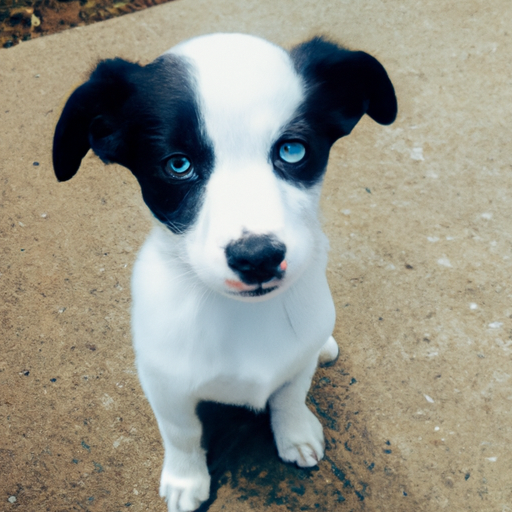Introduction
You’ve just brought home a fluffy, playful puppy. You instantly fall in love with those adorable puppy eyes. They’re a unique shade of blue, so bright and vivid. But wait, will they stay this way forever? This might be a question you’re asking yourself right now. Let’s delve into this matter together and find out if puppy eyes do change color.
The Science Behind Eye Color
Eyes, whether in humans or animals, derive their color from a pigment called melanin. The quantity and distribution of melanin dictate the eye color.
In puppies, the production of melanin is not in full swing at birth. This means that all puppies are born with blue or gray eyes. As they grow, melanocytes, the cells responsible for melanin production, become more active. This often leads to a change in eye color.
The Eye Color Evolution
Puppies open their eyes for the first time about two weeks after birth. At this stage, their eyes are a cloudy blue color. This is due to the fact that the iris, the colored part of the eye, lacks melanin.
As puppies grow older, specifically between 6 to 8 weeks, melanin production increases. The puppy’s eyes may start to change from blue to their adult color. This color change usually completes by the time a puppy is around 10 weeks old.
Common Eye Colors in Dogs
Depending on the breed, your puppy’s eyes could end up being one of several colors:
- Brown: This is the most common eye color in dogs. The shade can range from light brown to dark chocolate.
- Hazel: A blend of green and brown, hazel eyes are commonly found in breeds like the Border Collie.
- Blue: While rare, some breeds like the Siberian Husky or Australian Shepherd can have blue eyes.
- Amber: Amber eyes are typically found in breeds like the American Pit Bull Terrier.
- Green: This is extremely rare in dogs, but it can occur in breeds like the Weimaraner.
| Breed | Common Eye Color |
|---|---|
| Border Collie | Hazel |
| Siberian Husky | Blue |
| American Pit Bull Terrier | Amber |
| Weimaraner | Green |
Can Eye Color Indicate Health Issues?
In some cases, a change in your puppy’s eye color could indicate a health issue. For instance, if your puppy’s eyes change to a cloudy color, it could be a sign of cataracts. Similarly, red or pink eyes may suggest an eye infection or inflammation. If you observe any unusual changes in your puppy’s eyes, it’s important to consult a vet immediately.
Can Eye Color Change in Adulthood?
Typically, a dog’s eye color sets by the time they’re 10 weeks old. However, certain health conditions like glaucoma, uveitis, or nuclear sclerosis can cause a change in eye color during adulthood. If you notice any such changes, it’s crucial to seek veterinary care.
Frequently Asked Questions (FAQs)
Do all puppies have blue eyes?
Yes, most puppies are born with blue or gray eyes due to lack of melanin. However, this color often changes as they grow older.
When do puppy eyes change color?
Puppy eyes usually start to change color around 6 to 8 weeks old. By the time they’re 10 weeks old, most puppies have their adult eye color.
Can a puppy’s eyes stay blue?
In certain breeds like the Siberian Husky or Australian Shepherd, the puppy’s blue eyes might stay blue. However, in most cases, a puppy’s eyes change from blue to another color.
Is a change in eye color a sign of health issues?
While eye color change in puppies is usually part of their natural growth, a sudden change in eye color in an adult dog may indicate a health problem. Always consult a vet if you notice any unusual changes.
In conclusion, it’s fascinating to watch your little companion grow and change right before your eyes. Enjoy every moment, and remember, no matter what color your puppy’s eyes turn out to be, the love and loyalty in them will remain the same.



